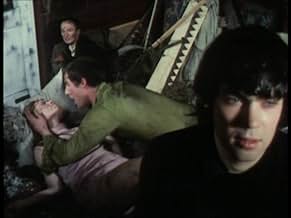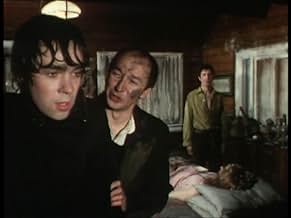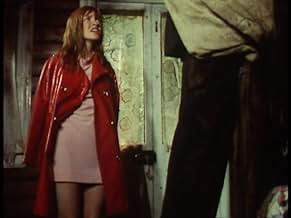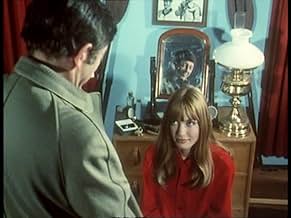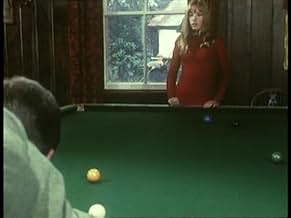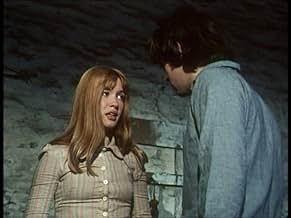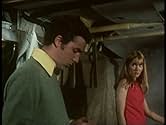Three teenagers discover a mysterious set of owl and flower-patterned dinner plates in the attic and the magical ancient legend of the "Mabinogion" comes to life once again in their Welsh va... Read allThree teenagers discover a mysterious set of owl and flower-patterned dinner plates in the attic and the magical ancient legend of the "Mabinogion" comes to life once again in their Welsh valley.Three teenagers discover a mysterious set of owl and flower-patterned dinner plates in the attic and the magical ancient legend of the "Mabinogion" comes to life once again in their Welsh valley.
Browse episodes
Storyline
Did you know
- TriviaAlison's mother Margaret is never actually seen on screen throughout the entire series, even though she is present throughout the family's stay and referred to by the other characters.
- ConnectionsFeatured in The Worlds of Fantasy: The Child Within (2008)
- SoundtracksTon Alarch
Performed by Jean Bell
[closing music for each episode]
Featured review
An 8-part TV series that includes a supernatural theme based on folklore, murder, (hinted, off-screen) sex, and demonic possession.
So perfect Sunday teatime viewing for all the family in 1970, with the first episodes being shown just before Christmas 1969.
No need to go into the story too much. It is retelling/updating/"inspired by" story based on a tale from the Mabinogion by acclaimed children's author Alan Garner, who was heavily involved in this TV version of his novel (and as a result it is a very faithful version). It features three young people (probably meant to be aged around 15-16) in an emotional triangle (to call it a love triangle would be misleading), living in a Welsh manor house in a valley cut off from the outside world (no electricity, phone, etc. - which was entirely plausible for the late 60s/early 70s).
The discovery of a strange dinner service results takes over the young girl - Alison - (played very well by an actress some 10 years older than the part she is playing) who is compelled to trace the pattern on the plates and make paper owls. And so the story begins.
After this it gets quite complex - to the extent that the summary of the previous episode that starts episodes 2-8 is absolutely required viewing, even if you are binging the entire series (its available on YouTube) because you will have missed something!
The three young actors (though they are significantly older than the parts they play) do a great job holding together a tale that basically only has six parts in it (the others being the father of two of the children, a live-in housekeeper and mother of the third, and a strange and apparently a little mad handyman/gardener.
Spread over 8 25-minute episodes the story will seem a little slow to modern viewers, with not a great deal of action (you can literally count the number of spots of blood that are shown), but what is hinted at and what probably happens off camera is another matter entirely.
Perhaps this is where the family viewing comes in because adult viewers will likely get the hints that children will miss, such as - to take one fairly mild example - why is Alison "ill" and in bed at the start, in her red nightdress, despite actually appearing quite perky? Not that hard for an adult to guess.
Each episode pushes the story forward with the last one being quite strong stuff, with what is essentially a form of demonic possession centre screen. A suspect a few viewers choked on the Sunday tea when this was shown.
But it is not just the story that would raise eyebrows - and actually make this unfilmable today (for children anyway) - it is also the style of filming. There may be little blood, but the camera loves Alison's legs in their 1960s short skirts to an extent that would be very worrying if you did not know that the actress was 25.
Overall this is a dark, complex, difficult but brilliant drama that uses folklore and the supernatural in a way that would be utterly impossible for the target audience today.
So perfect Sunday teatime viewing for all the family in 1970, with the first episodes being shown just before Christmas 1969.
No need to go into the story too much. It is retelling/updating/"inspired by" story based on a tale from the Mabinogion by acclaimed children's author Alan Garner, who was heavily involved in this TV version of his novel (and as a result it is a very faithful version). It features three young people (probably meant to be aged around 15-16) in an emotional triangle (to call it a love triangle would be misleading), living in a Welsh manor house in a valley cut off from the outside world (no electricity, phone, etc. - which was entirely plausible for the late 60s/early 70s).
The discovery of a strange dinner service results takes over the young girl - Alison - (played very well by an actress some 10 years older than the part she is playing) who is compelled to trace the pattern on the plates and make paper owls. And so the story begins.
After this it gets quite complex - to the extent that the summary of the previous episode that starts episodes 2-8 is absolutely required viewing, even if you are binging the entire series (its available on YouTube) because you will have missed something!
The three young actors (though they are significantly older than the parts they play) do a great job holding together a tale that basically only has six parts in it (the others being the father of two of the children, a live-in housekeeper and mother of the third, and a strange and apparently a little mad handyman/gardener.
Spread over 8 25-minute episodes the story will seem a little slow to modern viewers, with not a great deal of action (you can literally count the number of spots of blood that are shown), but what is hinted at and what probably happens off camera is another matter entirely.
Perhaps this is where the family viewing comes in because adult viewers will likely get the hints that children will miss, such as - to take one fairly mild example - why is Alison "ill" and in bed at the start, in her red nightdress, despite actually appearing quite perky? Not that hard for an adult to guess.
Each episode pushes the story forward with the last one being quite strong stuff, with what is essentially a form of demonic possession centre screen. A suspect a few viewers choked on the Sunday tea when this was shown.
But it is not just the story that would raise eyebrows - and actually make this unfilmable today (for children anyway) - it is also the style of filming. There may be little blood, but the camera loves Alison's legs in their 1960s short skirts to an extent that would be very worrying if you did not know that the actress was 25.
Overall this is a dark, complex, difficult but brilliant drama that uses folklore and the supernatural in a way that would be utterly impossible for the target audience today.
- johnbirch-2
- Nov 27, 2024
- Permalink
- How many seasons does The Owl Service have?Powered by Alexa
Details
Contribute to this page
Suggest an edit or add missing content


